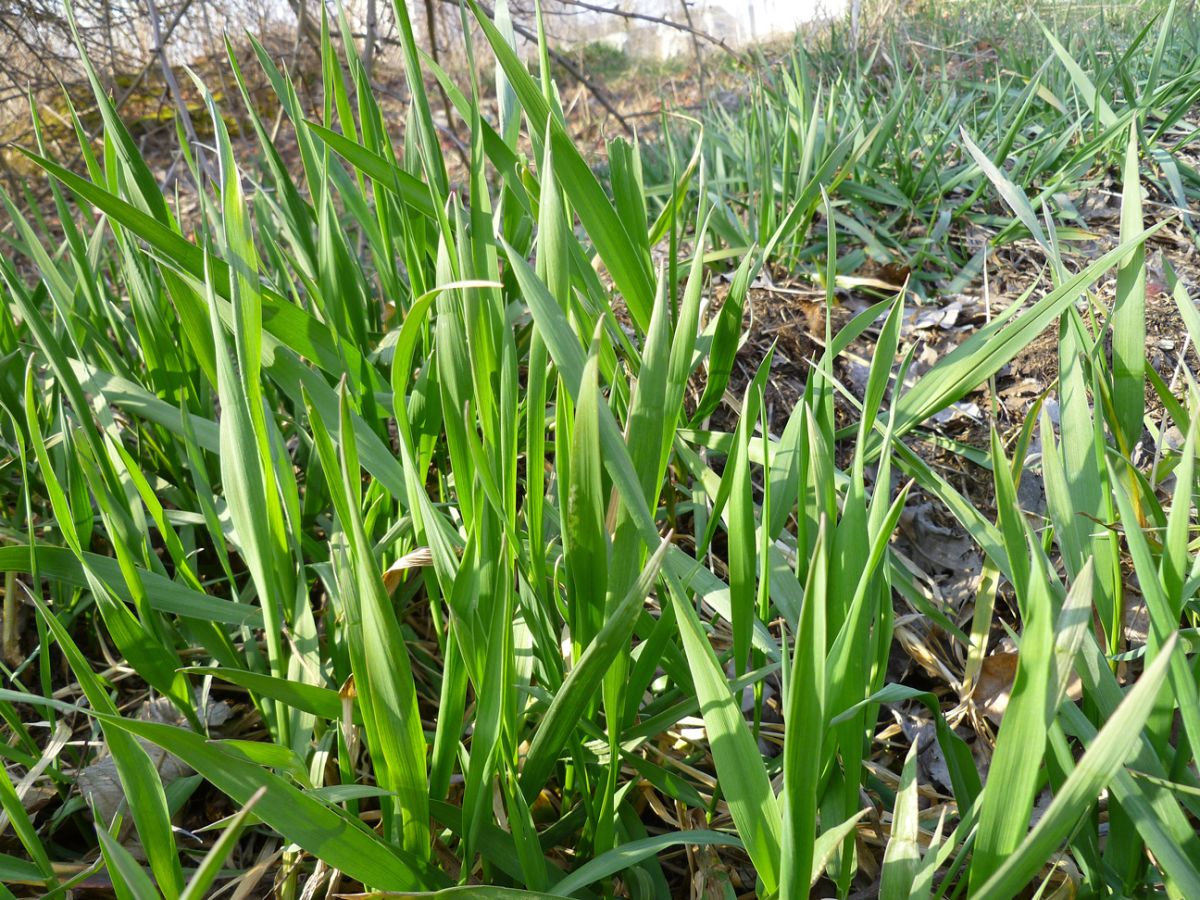If you have Bermuda and/or Japanese (zoysia) grass growing in your yard, you’ve experienced first-hand how invasive it can be. Controlling it can be a challenging task… but with the right approach, it is possible to manage their growth effectively.
Japanese and Bermuda grasses aren’t generally recommended for lawns in Virginia, since our climate is better suited for cool-season grasses, like tall fescue and rye. But since we are in what’s called a transition zone — between the colder zones in the north and the warmer zones in the south — some lawns contain a combination of both.
If that’s your situation, or if some Bermuda or zoysia grass has snuck into your yard from neighboring properties, we’ve compiled some tips to help you control these invasive grasses.
How to identify Bermuda and Japanese grass
Before you can control these grasses, you need to familiarize yourself with their characteristics so you can distinguish them from desirable turfgrass species commonly found in your area. This will enable you to target these invasive grasses specifically during control efforts.
Bermuda Grass:
- Fine-textured grass with a dense growth habit forming a low, creeping turf that spreads through above-ground runners and below-ground rhizomes.
- Narrow leaf blades that range from 0.8 to 6 inches in length. They are typically flat, but can also be slightly folded or rolled.
- Generally medium to dark green, but can vary depending on environmental conditions.
- Grows aggressively, quickly filling in bare spots and spreading across the ground.
- Produces seed heads on tall stems that rise above the turf. The seedheads are typically composed of several finger-like spikes.
- Turns brown and goes dormant during the fall and winter.
Japanese Grass (Zoysia japonica):
- Dense and compact growth habit, forming a thick turf.
- Leaf blades are typically short and narrow, ranging from 0.8 to 2.8 inches in length. They are generally stiff and have a slightly rough texture.
- Generally medium to dark green, but can vary depending on environmental conditions.
- Slow to moderate growth rate. It spreads through above-ground runners and forms a tightly-knit turf.
- Produces seed heads on tall stems, similar to Bermuda grass.
- Can withstand colder temperatures than Bermuda grass and may remain green longer during cool seasons.
Controlling Bermuda and Japanese grass
Controlling Bermuda and Japanese grass that have invaded your lawn can be challenging, as these warm-season grasses are typically more aggressive and can outcompete cool-season grasses. Here are some methods you can use to manage and restrict their growth:
- Mowing height — Adjust your mower to a higher setting and maintain your lawn at a taller height. Bermuda grass and Japanese grasses thrive in shorter conditions, so keeping the grass taller can help suppress their growth and limit their ability to establish.
- Proper watering — Practice proper watering techniques to discourage the growth of invasive grasses. Deep and infrequent watering is recommended, as it promotes healthy root growth in desirable grass species while making it harder for Bermuda and Japanese grasses to compete.
- Regular maintenance — Regularly remove any invading grasses by hand pulling manually, being careful to remove all the runners or rhizomes. This can help prevent their spread and limit their establishment. Be diligent in inspecting your lawn for any signs of these grasses and promptly address them.
- Pre-emergent and post-emergent herbicides — In severe cases or when manual removal is not sufficient, selective herbicides specifically formulated for Bermuda and Japanese grasses can be used. Follow the instructions carefully and remember to consider any potential impacts on desirable grass species and nearby plants.
- Overseeding — Consider overseeding with desirable turfgrass species that are better adapted to your region. By promoting a dense and healthy lawn, you create an environment that is less favorable for the growth and establishment of invasive grasses.
- Regular maintenance schedule — Stick to a consistent lawn care schedule, including proper fertilization, aeration and dethatching. A healthy and well-maintained lawn is more resilient against invasive grasses.
- Smothering — If the invaded area is small, you can try smothering the grasses. Use a tarp or heavy mulch to block sunlight, leaving the cover in place for several weeks to effectively suppress their growth.
- Professional assistance — If the infestation is severe or persistent, it may be beneficial to seek the help of a professional lawn care service. At Brandon Rushing, we provide specialized treatments as an add-on to our lawn care programs to effectively control invasive grasses while preserving the integrity of your fescue or ryegrass lawn.
Persistence is key
Controlling Bermuda and/or Japanese grass is an ongoing process, and a combination of methods may be necessary for effective management. It's essential to be persistent and monitor the lawn regularly to address any new growth as soon as possible.
If you find the task overwhelming or need expert guidance, we can help. At Brandon Rushing, we specialize in lawn and garden care and have the expertise and experience necessary to help you grow and maintain a healthy lawn. Call us or book a consultation, and we’ll devise a plan to keep your lawn lush, green, and healthy.





